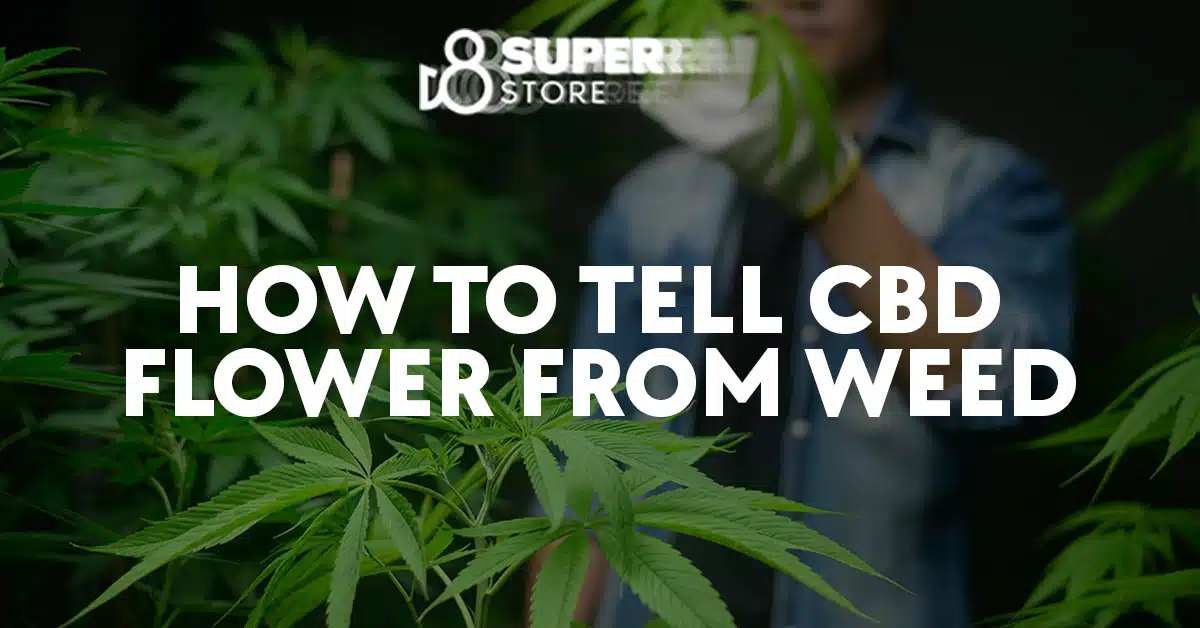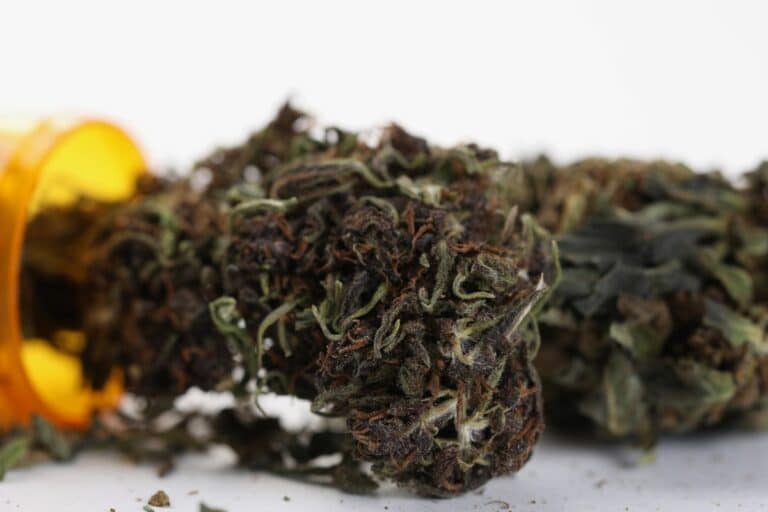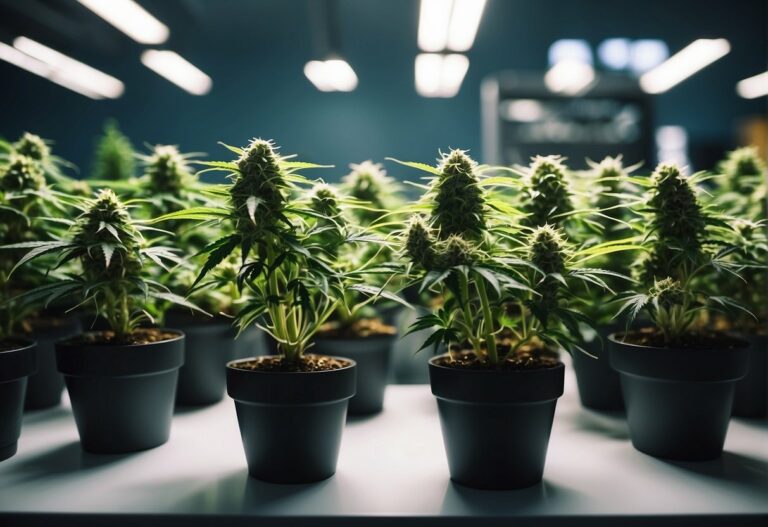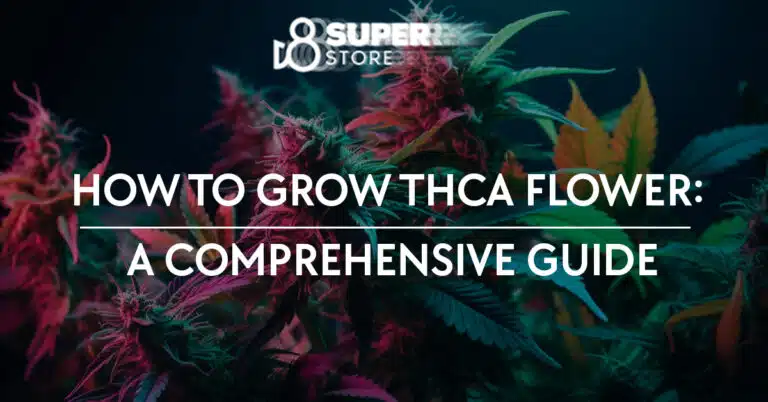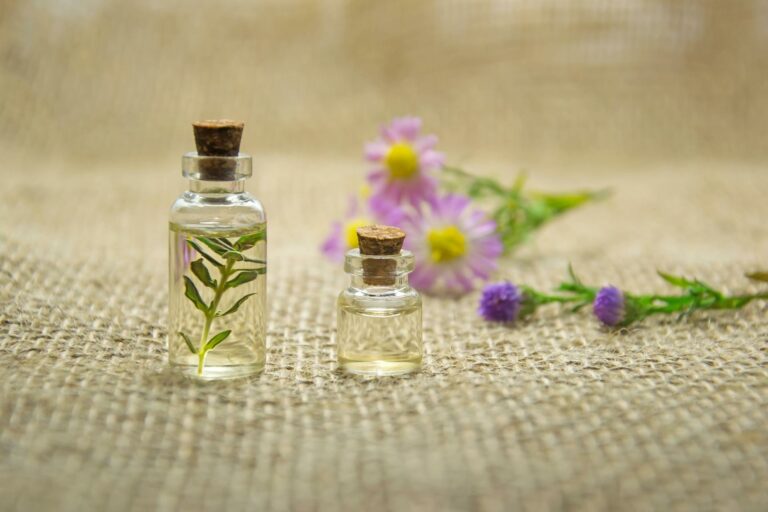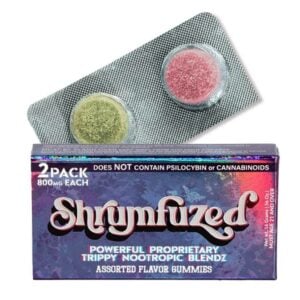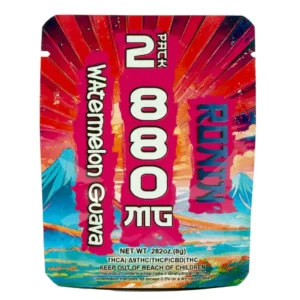How to Tell CBD Flower from Weed: Identifying Key Differences
Grasping the distinction between CBD flower and its THC-loaded counterpart, often dubbed “weed,” unlocks the secrets of cannabis mastery. CBD flower comes from hemp and packs a punch with CBD while keeping THC levels almost invisible – forget about blasting off to outer space. On the flip side, “weed” boasts a high THC content, grown for either fun or health aims. Aimed at those eager to conquer the cannabis challenge, this nugget of knowledge is pure gold. Dive deeper and learn how recognizing these variances could make your journey through the cannabis world smooth sailing.
Table of contents
When you’re examining cannabis products, it can be challenging to differentiate CBD flower from high-THC weed, as they can appear quite similar. Both can come in various strains, displaying a range of colors, aromas, and trichome coverage – the frosty looking crystals on the surface of the buds. However, the critical differences lie in their chemical compositions and the effects they elicit. CBD flower is sought after for its potential therapeutic benefits without the intoxicating effects, used often to relieve symptoms like anxiety, pain, and inflammation. It’s legal in more jurisdictions, provided it contains less than 0.3% THC.
To tell CBD flower from weed, you can start by checking for lab results or product packaging that indicates cannabinoid content, particularly the percentages of THC and CBD. Legal CBD flower should be accompanied by certification that confirms its THC content meets the legal threshold. When lab results aren’t available, it’s harder to tell just by looking, but the smell can give you a hint: CBD flower often has a milder scent compared to THC-rich strains, which tend to have a more pungent, skunky aroma attributable to their terpene profiles. Remember to consider these factors along with local laws and regulations when seeking out cannabis products for personal use.
Understanding Cannabis Sativa
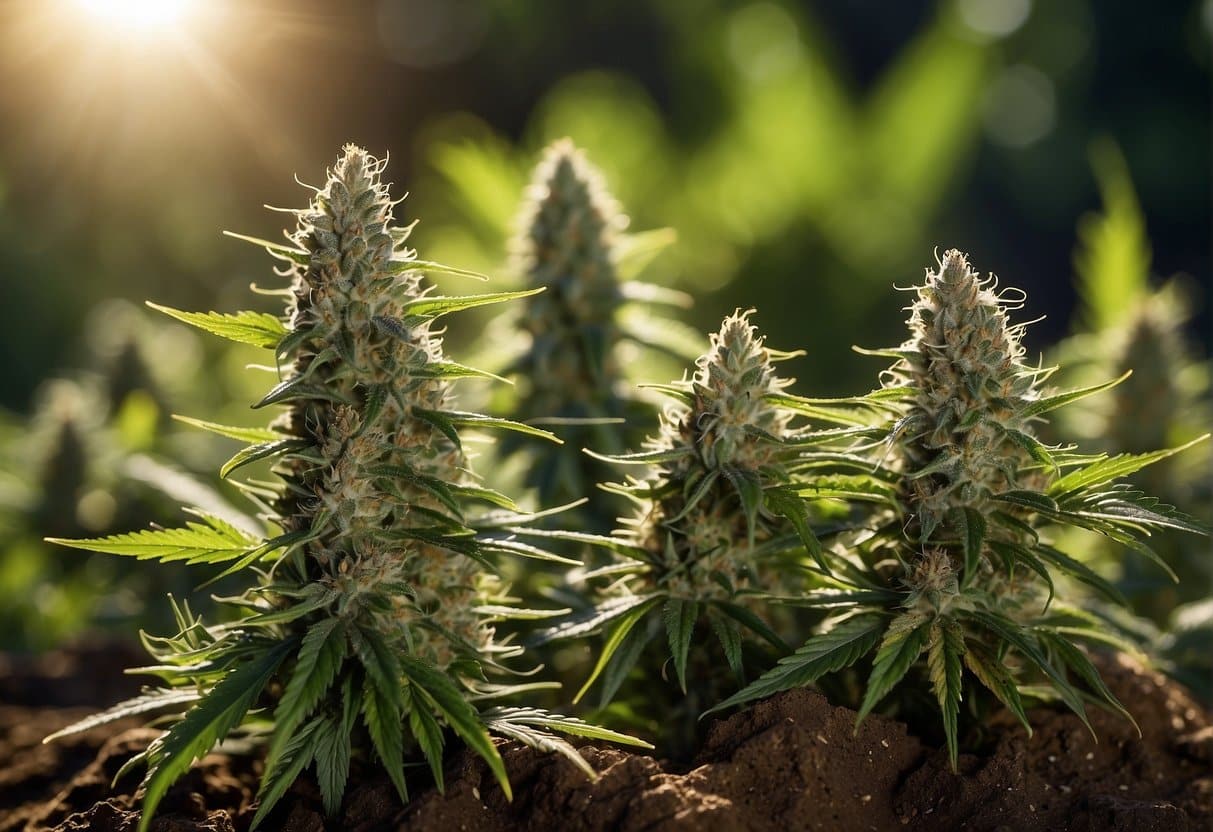
Cannabis Sativa is a complex plant with varieties that manifest in distinct forms as hemp and marijuana. Your understanding of their differences, especially in cannabinoid content and legal status, is crucial when distinguishing between them.
Distinguishing Hemp and Marijuana
Hemp and marijuana are both derived from Cannabis sativa, yet they diverge significantly in their THC content. Hemp is specifically cultivated to contain no more than 0.3% THC by dry weight. This is not enough to produce psychoactive effects. On the contrary, marijuana is recognized for its high THC content and is grown with the intention to maximize these levels, often resulting in potent psychoactive outcomes.
Cannabinoid Profiles: THC vs CBD
The two primary cannabinoids found in Cannabis sativa are THC (tetrahydrocannabinol) and CBD (cannabidiol). THC is the principal psychoactive component, while CBD is non-psychoactive and is often extracted from hemp for its potential therapeutic properties. Your ability to tell CBD flower from weed largely depends on understanding these components:
- Hemp typically has a high CBD and low THC profile.
- Marijuana exhibits high THC levels and can also contain various CBD concentrations.
Legal Definitions and 2018 Farm Bill
Legality is a significant factor differentiating hemp from marijuana. The 2018 Farm Bill federally legalized industrial hemp, removing it from the Controlled Substances Act, provided it contains less than 0.3% THC. Conversely, marijuana remains federally illegal, although many states have specific provisions for its medical or recreational use. Here’s how you need to understand their legal standings:
- Industrial Hemp: Legal at the federal level; widely used for industrial and therapeutic applications.
- Marijuana: Controlled substance at the federal level; legality varies by state.
Characteristics of CBD Flower and Weed
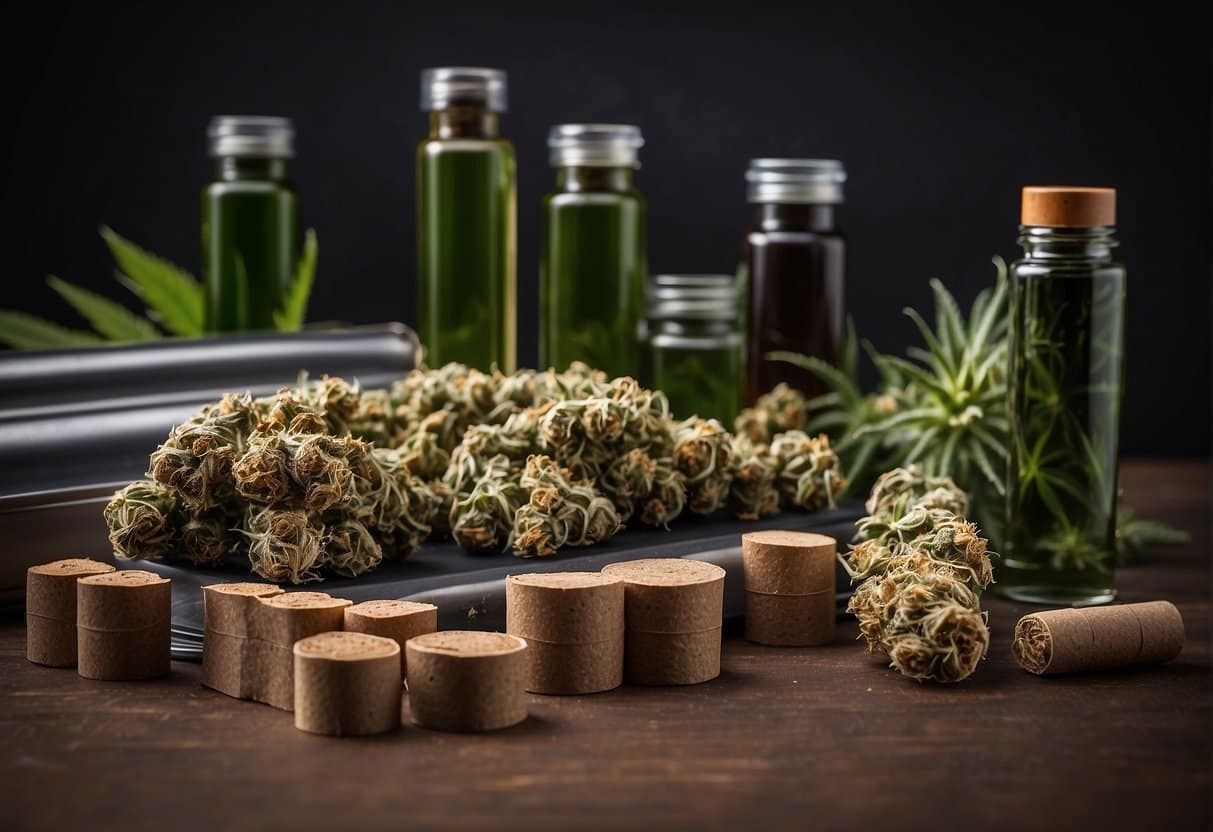
When discerning CBD hemp flower from THC-rich marijuana flower, pay attention to three key aspects: visual cues, scent profiles, and the experience during consumption. These characteristics are critical in distinguishing between the two.
Visual Appearance and Color
CBD Flower: Typically, CBD hemp flower boasts a lighter green shade with more prominent orange or brownish hairs. While its trichomes, the tiny crystal-like outgrowths on the plant, are visible, they might not be as dense or frosty in appearance compared to THC flower.
Weed (THC Flower): In contrast, marijuana flower, known for its high THC content, often shows a darker green color with abundant, sticky trichomes that give it a glittery look. The density of these trichomes can sometimes indicate a higher potency, which is not necessarily related to CBD content.
Aroma and Terpene Profiles
CBD Flower: The fragrance of CBD hemp flower can vary, but it’s generally milder with a grassy or earthy touch. The terpene profile may include myrcene, which imparts herbal tones, or pinene, giving it a pine-like aroma.
Weed (THC Flower): THC flower, on the other hand, usually emits a stronger, more pungent smell due to a broader range of terpenes. It can exhibit sweet, spicy, or even diesel-like aromas, depending on the dominant terpenes such as caryophyllene and limonene.
Taste and Smoking Experience
CBD Flower: When you smoke CBD hemp flower, expect a subtler taste that echoes its aromatic profile. Because of its lower THC levels, the smoking experience is often described as smooth and gentle, reflecting its non-intoxicating nature.
Weed (THC Flower): Smoking THC flower delivers a more robust flavor and a potent taste that lingers on the palate. As for the experience, it may provide the euphoric and psychoactive effects commonly associated with marijuana due to the higher THC content.
Effects and Uses of CBD and THC Products

When distinguishing between CBD flower and weed, understanding the direct impact of their active compounds – CBD and THC – on your body is essential. CBD and THC are known to produce different effects and have distinct uses, often leading to diverse experiences and benefits.
Psychoactive Effects and Intoxication
THC (tetrahydrocannabinol) is the primary psychoactive compound in cannabis that produces intoxicating effects. When you consume products high in THC, you may experience:
- Altered perception of time and space
- Feelings of euphoria or the “high” sensation
- Impairment in motor skills and cognition
In contrast, CBD (cannabidiol) is non-intoxicating and does not induce the same psychoactive effects. CBD products are sought after mainly for their lack of intoxication, making them a choice for those looking to avoid the mind-altering effects of THC.
Therapeutic Effects and Medical Applications
CBD and THC have distinct therapeutic effects and are used to address a variety of health issues. Here’s a brief overview:
CBD is known for its potential to help with:
- Anxiety: May reduce anxiety levels without the psychoactive effect of THC.
- Sleep: Can promote better sleep patterns for those with insomnia.
- Inflammation: Acts to relieve inflammation and associated pain.
- Chronic Pain: Non-intoxicating pain relief for various conditions.
- Addiction: Potential to aid in addiction treatment by reducing cravings.
THC also has several medical applications, including:
- Appetite Stimulation: Often used to increase appetite in conditions such as HIV/AIDS or cancer.
- Chronic Pain: Has significant pain-relieving properties, especially in neuropathic pain.
- Depression: May elevate mood in patients dealing with depression.
Both CBD and THC hold therapeutic value, yet they cater to different needs and preferences due to their contrasting effects on the body and mind. While THC is associated with a psychoactive experience, CBD provides a non-intoxicating alternative with a focus on therapeutic benefits.
Identifying High-Quality CBD Flower
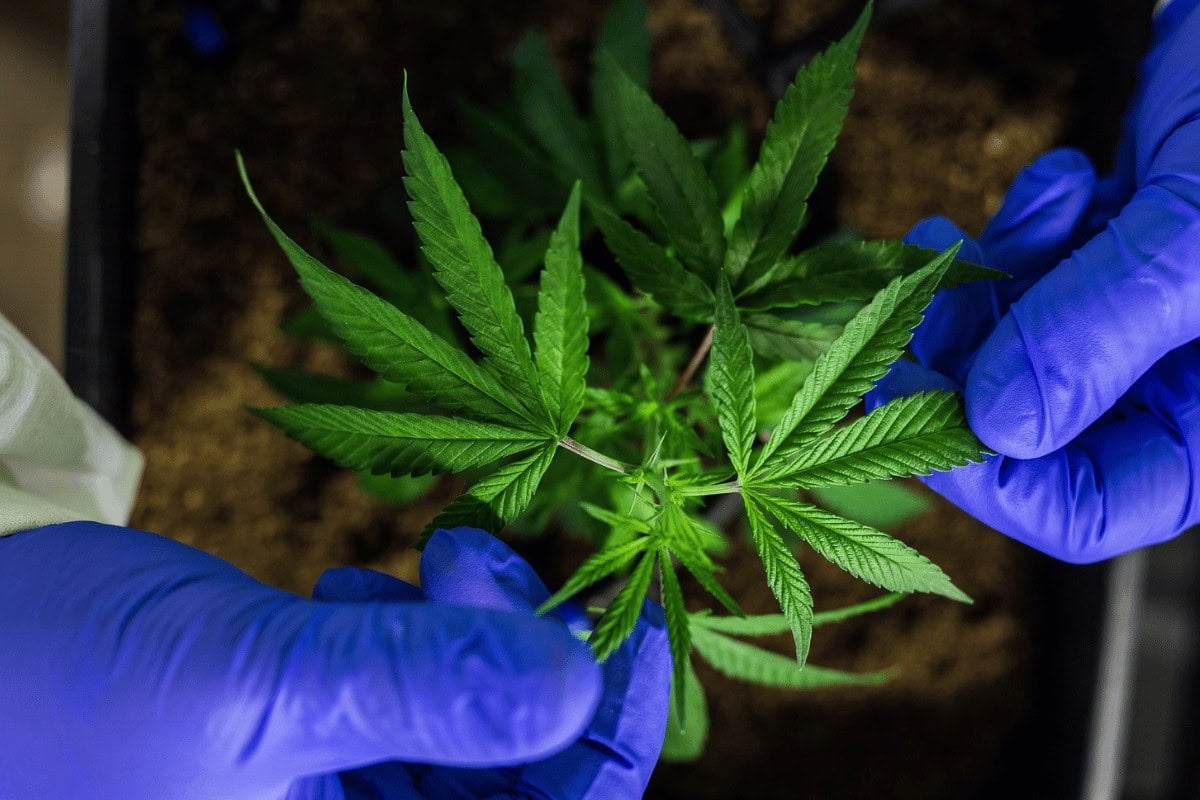
When choosing a CBD flower, it’s crucial to analyze its trichomes, cannabinoid profile, and accompanying lab reports. These factors are essential in ensuring your selection meets quality standards and complies with legal THC limits.
Examination of Trichomes and Plant Quality
Inspect the trichomes; the tiny, crystal-like structures on the surface of the flower. High-quality CBD flower will have a frosty appearance due to a dense coverage of trichomes, which contain the plant’s cannabinoids and terpenes. The presence of amber or milky white trichomes can indicate a mature plant and optimal cannabinoid concentration. Additionally, the plant should be free of pests, molds, and be properly trimmed to ensure you’re getting the best part of the flower.
Assessing Cannabinoid and Terpene Content
High-quality CBD flower will have a robust profile of cannabinoids and terpenes. The CBD concentration is key, and you should look for flowers with a CBD content that aligns with your needs, while containing less than 0.3% THC to comply with federal regulations. Terpenes contribute to the aroma and flavor and can also enhance the therapeutic effects of the flower due to the entourage effect.
Understanding Lab Testing and Labels
Always check for a lab test or a Certificate of Analysis (COA) when purchasing CBD flower. This document will detail the exact cannabinoid content, confirming the CBD and THC levels, and ensuring the product is legal and safe for consumption. The label should provide clear information on the strain, cannabinoid and terpene concentrations, and the producer’s contact information. Trustworthy producers will be transparent with this information, helping you identify high-quality CBD flower with confidence.
The Horticulture of CBD Flower
When cultivating CBD flower, it’s essential to understand the specific horticultural practices, differences between various strains, and the methods used for harvesting and processing to ensure quality.
Hemp Plant Cultivation Practices
To successfully grow hemp plants, you need a strategic approach that begins with quality seeds. Selecting the right seeds is crucial, as they should have a high CBD and low THC content to classify as industrial hemp rather than marijuana. Ideal growing conditions for hemp include well-drained soil with a pH between 6.0 and 7.0, and access to adequate sunlight. Growers must maintain a consistent watering schedule and regularly test soil for nutrient composition, adjusting fertilization as required.
Identifying Different Strains and Breeders
Different strains of hemp contain varying concentrations of CBD. For instance, Hawaiian Haze is a strain known for its high CBD content and tropical aroma. When choosing a strain, inspect the nugs or cannabis buds; high-CBD hemp flower often has a distinct, fresh smell and a dense, trichome-rich appearance. Trusted breeders can provide detailed profiles for their strains, including genetics, CBD to THC ratios, and terpene profiles, which will influence the plant’s therapeutic effects and scent.
Harvesting and Processing Methods
Harvesting hemp for CBD production involves timing the cut when trichomes on the cannabis plant have reached their peak. This is typically when CBD levels are highest and THC levels remain within legal limits. Post-harvest, the hemp plants undergo drying and curing, which are critical steps that can impact both the flavor and efficacy of the CBD hemp flowers. Drying removes moisture to prevent mold, while curing enhances flavor and cannabinoid profiles. Techniques vary but often include hanging the plants upside down in a controlled environment before processing them into various forms for consumption.
Practical Information for Consumers
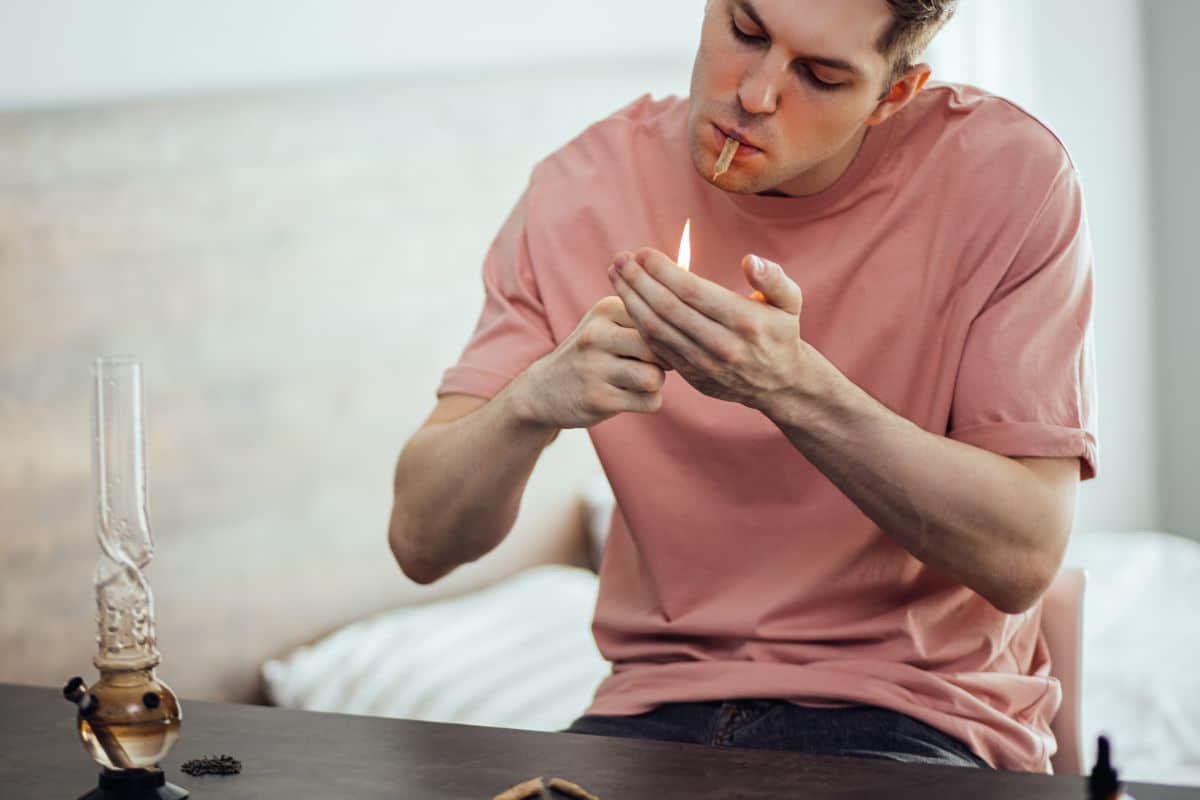
When considering CBD flower and weed, it’s essential to differentiate between the two in terms of chemical composition, use, and legal considerations. This section provides essential insights into CBD flowers versus other products, consumption methods, and consumer safety regulations.
CBD Flower Versus Other CBD Products
CBD flower is the bud of hemp plants that contain high levels of cannabidiol (CBD) and low levels of tetrahydrocannabinol (THC). Unlike traditional weed, which has higher THC levels and can induce psychoactive effects, CBD hemp flower offers potential benefits to your endocannabinoid system without the ‘high’. Other CBD products include oils, edibles, and teas, each with different utilization and absorption rates. For example, CBD oil is highly versatile and can be added to food or taken sublingually for quicker absorption. Edibles, which include gummies and baked goods, provide a longer onset of effects as they must pass through your digestive system.
Usage and Consumption Methods
You have several options for consuming CBD flower, including smoking, vaping, and using it as tea. Smoking involves combustion and inhalation of smoke, whereas vaping uses a device to heat the flower just below combustion, creating a vapor you inhale. This method of consumption typically allows for faster absorption and onset of effects. When CBD flower is brewed as tea, effects take longer to manifest since the active ingredients must be digested. Beyond these methods, CBD oils can be applied topically or ingested, offering flexibility in how you utilize CBD products.
Regulations and Consumer Safety
Regulatory compliance is critical for consumer safety. In the USA, the legal status of CBD is determined by the THC content and its source: CBD derived from hemp with less than 0.3% THC is federally legal thanks to the 2018 Farm Bill. However, individual states have the power to enforce their own regulations. Manufacturers are required to use proper packaging and labeling, which often includes QR codes linking to certificates of analysis that verify the product’s content. It’s important to purchase from reputable sources such as licensed dispensaries to ensure the legality and safety of your CBD products. Always check the legal status in your area before purchasing.
Remember to look for high-CBD strains or products and verify the manufacturer’s claims through lab reports. Each method of consumption comes with its own set of potential benefits and risks, so choose the option that aligns with your needs and preferences.
Frequently Asked Questions
When distinguishing between CBD hemp flower and THC-rich cannabis, there are specific characteristics you can look for in appearance, aroma, texture, trichomes, taste, and color.
How can one distinguish between CBD hemp flower and THC-rich cannabis by appearance?
CBD hemp flowers typically have a less dense structure compared to THC-rich cannabis, which tends to have a more compact and tighter bud formation.
What are the typical characteristics of CBD flower’s aroma compared to traditional marijuana?
The aroma of CBD flower is usually more subdued and can have earthy, fruity, or floral notes, whereas traditional marijuana often exhibits a stronger, more pungent scent with a wider range of profiles including skunky, diesel, or pine aromas.
Does the presence of stickiness in a bud indicate its THC or CBD content?
Stickiness in a bud is generally attributed to the trichomes, which contain terpenes and cannabinoids like THC and CBD. While both high-THC and high-CBD flowers can be sticky, it is not a direct indicator of their specific cannabinoid content.
Are there visible crystals on CBD hemp flowers as there are on THC-rich buds?
Yes, CBD hemp flowers also have trichomes, which can appear as crystalline structures on the surface. However, the concentration and appearance might differ, with THC-rich buds often having a more pronounced crystalline presence.
What differences in taste should be expected when comparing CBD flower to marijuana?
When comparing CBD flower to marijuana, you might find the taste of CBD to be milder and more herbal, while marijuana frequently has a robust and sometimes harsh flavor due to its higher concentrations of terpenes and THC.
Does the color of the bud signal whether it’s a CBD or THC dominant strain?
The color of the bud alone doesn’t reliably indicate cannabinoid content. Both CBD and THC dominant strains can display a range of colors from greens to purples, though sometimes CBD strains can have lighter green hues.

